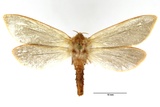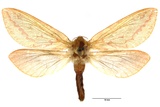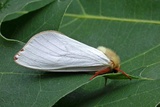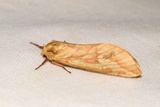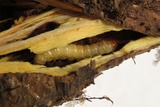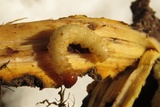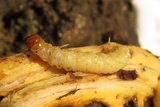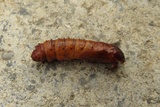Hepialus humuli (Linnaeus, 1758) Species
Last modified: June 20, 2025, 8:46 p.m.
A rather common species throughout Belgium.
This species is considered Near Threatened according to the IUCN Red List category for Flanders 2023.
Details
- Classification
- Family: Hepialidae > Genus: Hepialus > Species: Hepialus humuli
- Vernacular names
- Hopwortelboorder (NL), Ghost Moth (EN), Hépiale du houblon (FR), Hopfen-Wurzelbohrer (DE)
- First mention in Belgium
- De Sélys-Longchamps E. 1837. Catalogue des Lépidoptères ou Papillons de la Belgique, précédé du tableau des Libellulines de ce pays. — — : 1–29. On page 24 (as Hepialus Humuli). view page
- Status
-
Native
Distribution
Imago
H. humuli is a fairly large moth having a wingspan of 40–70 mm. This species shows a very notable sexual dimorphism: the forewings of the male are silvery white with buff fringes while the highly variable female has yellowish forewings with inconstant orange to brown markings. In general, the female is also considerably larger than the male. The antennae are strikingly short and the moths lack functioning mouth parts so they cannot feed.
Bionomics
Females of this species scatter their eggs over plants as they fly over them in a suitable biotope. The larva lives on the roots of grasses and small herbaceous plants. It hibernates as a larva once or twice and pupates in a cocoon in the ground. The adults are active from dusk onwards and, later on, come to light.
Flight periods
The adults fly in one generation a year from late May till the beginning of August.
Observed on
- Host plant (species):
- Humulus lupulus
- Host plant (genera):
- Rumex
- Substrates:
- Grasses and Herbaceous plants
Roots of Gramineae and small herbaceous plants like Humulus lupulus and Rumex spp.
Habitat
This species can be found on roughs, along field edges and roadsides and in gardens.
